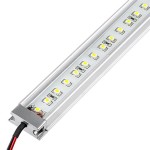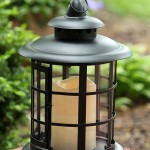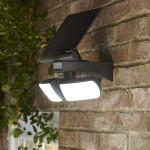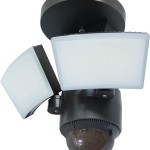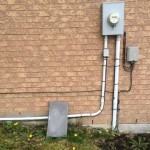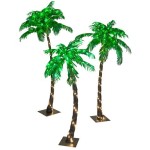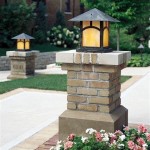Solar Panel Outdoor Lights: A Comprehensive Guide
Solar panel outdoor lights offer a sustainable and cost-effective solution for illuminating various outdoor spaces. These lights harness the power of the sun to generate electricity, eliminating the need for traditional wiring and reducing reliance on fossil fuels. Their increasing popularity stems from their ease of installation, minimal maintenance requirements, and environmental benefits.
These lighting systems are composed of several key components working in unison. Understanding these components and their functions provides a clearer perspective on the overall performance and longevity of solar panel outdoor lights.
Components of Solar Panel Outdoor Lights
Solar panel outdoor lights consist primarily of the following components: the solar panel, the rechargeable battery, the LED light source, the control circuit, and the housing. Each component plays a crucial role in the efficient operation of the lighting system.
Solar Panel: The solar panel is responsible for converting sunlight into electricity, a process known as the photovoltaic effect. Solar panels are typically made of silicon, a semiconductor material that generates an electrical current when exposed to sunlight. The efficiency of the solar panel directly impacts the amount of electricity generated and, consequently, the brightness and duration of the light.
Rechargeable Battery: The electricity generated by the solar panel is stored in a rechargeable battery. Common battery types used in solar lights include nickel-cadmium (NiCd), nickel-metal hydride (NiMH), and lithium-ion batteries. Lithium-ion batteries are generally preferred due to their higher energy density, longer lifespan, and lower self-discharge rate. The battery capacity determines how long the light can operate during periods of darkness or low sunlight.
LED Light Source: Light-emitting diodes (LEDs) are used as the primary light source in solar panel outdoor lights. LEDs are energy-efficient, long-lasting, and produce a bright, focused light. They consume significantly less energy than traditional incandescent or halogen bulbs, making them ideal for solar-powered applications. The color temperature of the LEDs can vary, ranging from warm white to cool white, allowing for customization of the lighting ambiance.
Control Circuit: The control circuit manages the charging and discharging of the battery, regulates the LED light output, and often incorporates features such as automatic on/off switching based on ambient light levels. A key function of the control circuit is to prevent overcharging and over-discharging of the battery, which can significantly reduce its lifespan. Some advanced control circuits also include dimming functions or motion sensors to conserve energy.
Housing: The housing protects the internal components from environmental factors such as rain, dust, and extreme temperatures. The housing is typically made of durable materials such as plastic, metal, or a combination of both. The design of the housing also influences the aesthetics of the light and its overall suitability for different outdoor settings.
Types of Solar Panel Outdoor Lights
The market offers a diverse range of solar panel outdoor lights, each designed to serve specific purposes and aesthetic preferences. These types can be broadly categorized based on their function, design, and installation method.
Path Lights: Path lights are designed to illuminate walkways, driveways, and garden paths. They typically feature a stake that allows them to be easily inserted into the ground. Path lights provide a low level of illumination, creating a safe and aesthetically pleasing environment. They are often used in rows to define the edges of pathways and guide pedestrians at night.
Spotlights: Spotlights provide a focused beam of light, ideal for highlighting specific features in a landscape, such as trees, shrubs, or architectural details. They often have adjustable heads, allowing users to direct the light where it is needed most. Spotlights can be used to create dramatic lighting effects and enhance the visual appeal of outdoor spaces.
Flood Lights: Flood lights provide a wide beam of light, suitable for illuminating large areas such as parking lots, backyards, or security perimeters. They typically have a higher light output than spotlights and are designed to provide general illumination. Flood lights enhance safety and security by deterring potential intruders and improving visibility.
String Lights: String lights consist of a series of small LED bulbs connected by a flexible wire. They are often used for decorative purposes, creating a festive atmosphere in gardens, patios, or balconies. String lights are available in a variety of colors and styles, allowing for customization to suit different occasions and preferences. They provide a soft, ambient light that enhances the overall ambiance of outdoor spaces.
Wall Lights: Wall lights are mounted on walls or fences, providing illumination for doorways, patios, or building facades. They often have a decorative design that complements the architectural style of the building. Wall lights enhance safety and security by illuminating entrances and pathways. They are available in a variety of styles, ranging from traditional lanterns to modern sconces.
Post Lights: Post lights are mounted on top of posts or pillars, providing general illumination for driveways, walkways, or garden areas. They typically have a larger fixture than path lights and provide a wider beam of light. Post lights enhance safety and security by illuminating entrances and pathways. They are available in a variety of styles, ranging from classic Victorian designs to contemporary minimalist designs.
Factors Influencing Performance and Longevity
The performance and longevity of solar panel outdoor lights are influenced by several factors, including the quality of the components, the amount of sunlight received, the ambient temperature, and the maintenance practices employed. Understanding these factors can help users optimize the performance and extend the lifespan of their solar lights.
Component Quality: The quality of the solar panel, battery, and LED light source significantly impacts the overall performance and lifespan of the solar light. Higher-quality components typically offer better energy conversion efficiency, longer battery life, and brighter, more consistent light output. Investing in solar lights with reputable brands and high-quality components can provide better long-term value.
Sunlight Exposure: The amount of sunlight that the solar panel receives directly affects the charging rate of the battery and the runtime of the light. Solar lights should be placed in locations that receive direct sunlight for at least six to eight hours per day. Shaded areas or locations with limited sunlight exposure will result in reduced battery charging and shorter runtime. Regularly cleaning the solar panel to remove dirt, dust, and debris can also improve sunlight absorption.
Ambient Temperature: Extreme temperatures can affect the performance and lifespan of the battery. High temperatures can accelerate battery degradation and reduce its capacity. Low temperatures can reduce the battery's ability to deliver power. It is important to choose solar lights that are designed to operate within the expected temperature range of the local climate. Some solar lights may have temperature compensation features to mitigate the effects of extreme temperatures.
Battery Maintenance: Proper battery maintenance can extend the lifespan of the battery and improve the overall performance of the solar light. Avoid completely discharging the battery, as this can damage its cells. If the solar light is not used for an extended period, it is recommended to fully charge the battery before storage and periodically recharge it to prevent self-discharge. Replacing the battery when it reaches the end of its lifespan can also restore the solar light to its original performance.
Cleaning and Maintenance: Regular cleaning of the solar panel and the light fixture can help maintain optimal performance. Use a soft cloth and mild detergent to remove dirt, dust, and debris from the solar panel. Avoid using abrasive cleaners or solvents, as they can damage the surface of the panel. Inspect the light fixture for any signs of damage or corrosion and repair or replace any damaged components. Trimming any vegetation that may be blocking sunlight from reaching the solar panel can also improve its performance.
Water Resistance: Ensure that the solar panel outdoor lights are appropriate for the environment they are placed in. Check the IP (Ingress Protection) rating. A higher IP rating means the light is more resistant to water and dust. For example, IP65 means the light is protected from dust and low-pressure jets of water. IP67 means the light is protected from dust and immersion in water up to 1 meter.
Proper placement and maintenance significantly improve the long-term functionality of solar panel outdoor lights, enabling users to maximize their investment and enjoy the benefits of sustainable outdoor lighting.
Ultimately, solar panel outdoor lights provide a practical and environmentally conscious method for illuminating outdoor spaces, offering a blend of convenience, cost savings, and ecological responsibility. Careful consideration of the factors impacting performance and longevity ensures optimal use and contributes to a more sustainable living environment.
In Stock Solar Powered Spotlight 2 Warm White Lights Panel Outdoor Lighting Landscape Yard Garden Tree Separately Ee Singapore

How To Make Solar Power Outdoor Lights Just Measuring Up

Tippy Outdoor Ip65 Modern Adjustable Standing Waterproof Lawn Light Solar Panel Direct

Solar Powered Outdoor Grass Globe Eco Land Pte Ltd
How Solar Yard Lights Work Howstuffworks

Solar Powered Garden Lights Tested And Reviewed By Fred In The Shed

Tippy Outdoor Ip65 Modern Adjustable Standing Waterproof Lawn Light Solar Panel Direct

How To Outdoor Solar Lights For The Winter Istorage

Solar Garden Lights Best In Singapore Dec 2024 Lazada Sg

The Best Solar Garden Lights Of 2024 With Expert Advice
